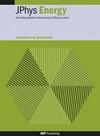热材料效率与压缩机性能等级的直接比较
IF 6.3
3区 材料科学
Q1 ENERGY & FUELS
引用次数: 1
摘要
热泵效率的提高可以大幅降低全球能源需求。目前正在研究热量热泵作为蒸汽压缩系统的一种潜在的更有效的替代方案。热量热泵由固态材料驱动,当施加磁场或电场以及机械应力时,固态材料的温度会发生显著变化。对于大多数热量材料来说,相变会导致一定量的功率耗散,这会极大地影响热量冷却系统的效率。对效率的影响可以用品质因数(FOM)来表示,该品质因数可以直接从材料特性中推导出来。根据文献数据,推导出了36种不同磁、弹性、电和压热材料类别的FOM。研究发现,最佳材料理论上可以达到90%以上的第二定律效率。FOM类似于蒸汽压缩系统的理想化压缩机的等熵效率。因此,对于给定的制冷剂,等熵效率可以直接与基于压缩机的制冷系统的理论上可实现的效率联系起来。在这项工作中,基于热量热泵的材料损失和蒸汽压缩系统的压缩机的效率,在热量热泵和蒸汽压缩体系的效率之间进行了理论比较。在这两种情况下都考虑了热再生的影响。在蒸汽压缩系统中,还研究了工作流体对效率的影响。本文章由计算机程序翻译,如有差异,请以英文原文为准。
On the efficiency of caloric materials in direct comparison with exergetic grades of compressors
Efficiency improvements in heat pump can drastically reduce global energy demand. Caloric heat pumps are currently being investigated as a potentially more efficient alternative to vapor compression systems. Caloric heat pumps are driven by solid-state materials that exhibit a significant change in temperature when a field is applied, such as a magnetic or an electric field as well as mechanical stress. For most caloric materials, the phase transition results in a certain amount of power dissipation, which drastically impacts the efficiency of a caloric cooling system. The impact on the efficiency can be expressed by a figure of merit (FOM), which can directly be deduced from material properties. This FOM has been derived for 36 different magneto-, elasto-, electro and barocaloric material classes based on literature data. It is found that the best materials can theoretically attain second law efficiencies of over 90%. The FOM is analogous to the isentropic efficiency of idealized compressors of vapor compression systems. The isentropic efficiency can thus be directly linked to the theoretically achievable efficiency of a compressor-based refrigeration system for a given refrigerant. In this work a theoretical comparison is made between efficiency of caloric heat pumps and vapor compression systems based on the material losses for the caloric heat pump and the efficiency of the compressor for vapor compression systems. The effect of heat regeneration is considered in both cases. In vapor compression systems, the effect of the working fluid on the efficiency is also studied.
求助全文
通过发布文献求助,成功后即可免费获取论文全文。
去求助
来源期刊

Journal of Physics-Energy
Multiple-
CiteScore
10.90
自引率
1.40%
发文量
58
期刊介绍:
The Journal of Physics-Energy is an interdisciplinary and fully open-access publication dedicated to setting the agenda for the identification and dissemination of the most exciting and significant advancements in all realms of energy-related research. Committed to the principles of open science, JPhys Energy is designed to maximize the exchange of knowledge between both established and emerging communities, thereby fostering a collaborative and inclusive environment for the advancement of energy research.
 求助内容:
求助内容: 应助结果提醒方式:
应助结果提醒方式:


